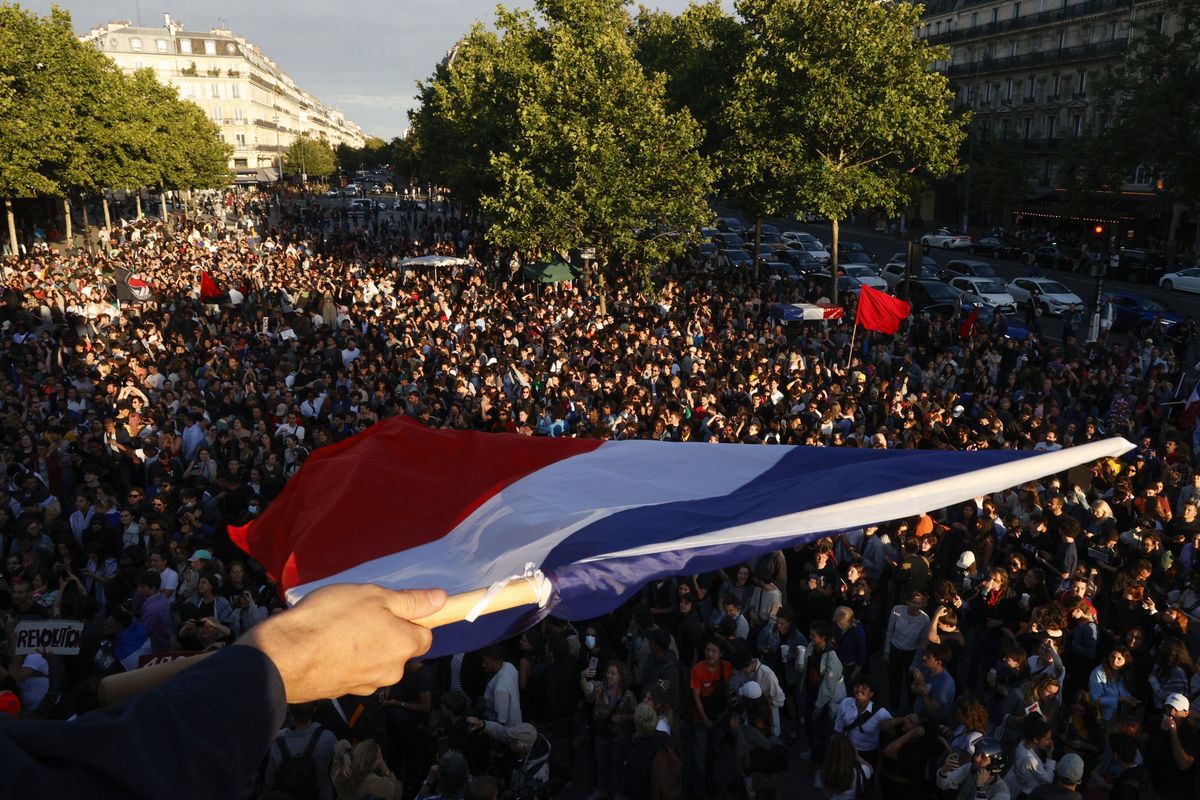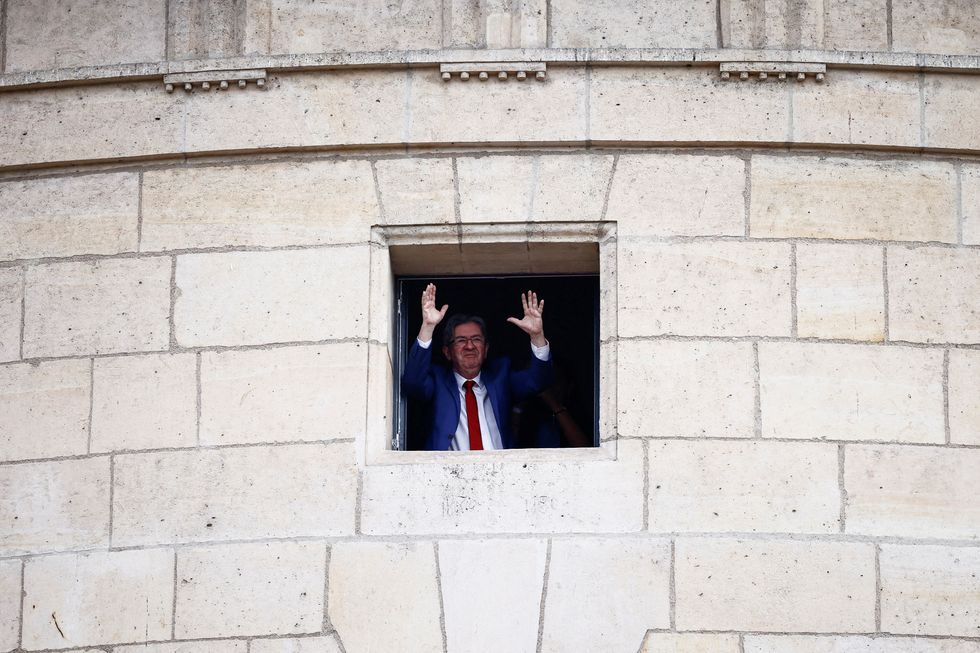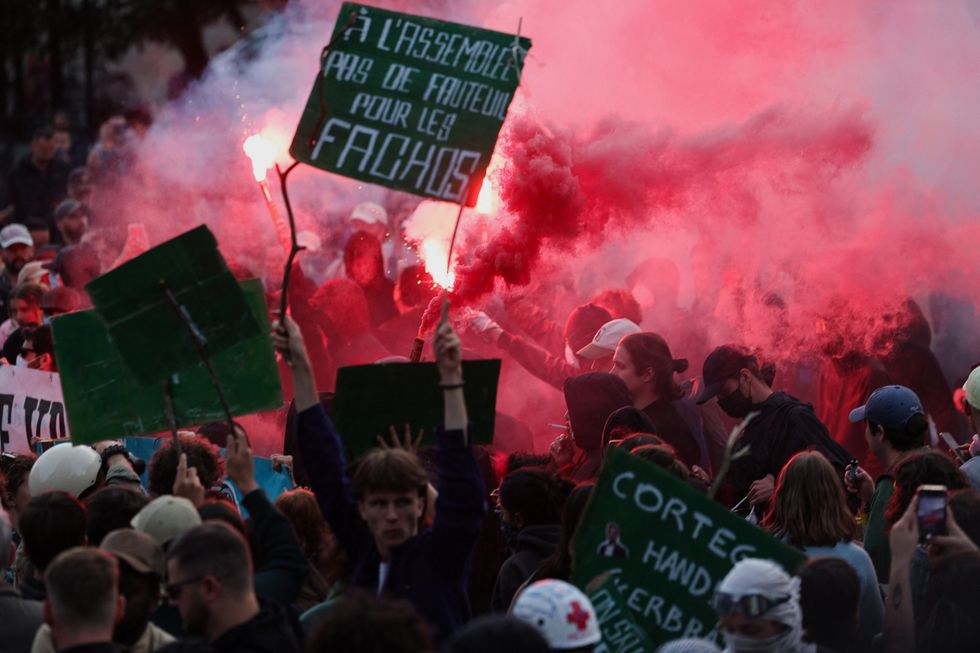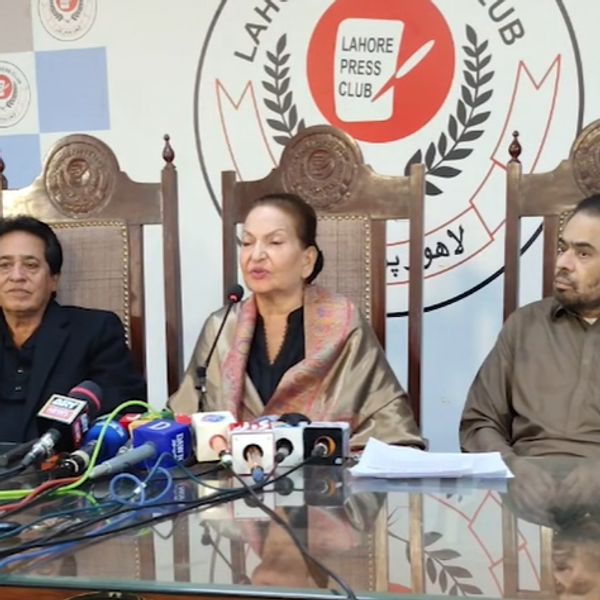French elections: Left-wing coalition turns the table in shock win. What comes next?
Winning coalition was formed just a month ahead of the July 7 elections

Mai Khalaf
Senior Producer
Mai Khalaf is a journalist with over 10 years of experience in digital strategy, news and content production, contributing to leading MENA media organizations. She holds a diverse academic background in journalism, global affairs, and psychology.

Reaction to the second round results of the 2024 snap legislative elections in France.
Reuters
Left-wing coalition triumphs, Macron second, Le Pen third in France.
France faces hung parliament, coalition government likely, political uncertainty looms.
Macron’s party crucial, left coalition challenges, potential political gridlock.
In an unexpected turn of events, a coalition of the Left won the legislative elections in France, held on Sunday, July 7. President Emmanuel Macron’s camp occupied second place, ahead of Marine Le Pen’s far right, which had been on course to win. However, without an absolute majority in the National Assembly, the country is headed towards a hung Parliament.
According to the official results released early Monday by the Interior Ministry, all three main blocs remained below the threshold needed to form the next government. A majority of 289 of 577 seats is needed for full control of the parliament.
Result breakdown according to latest update of Le Monde:
- First: The New Front Popular (NFP) obtained more than 182 seats.
- Second: Macron’s Together bloc obtained more than 168 seats.
- Third: Far-right Marine Le Pen’s National Rally obtained more than 143 seats, despite leading the first round.
These results leave many questions unanswered: Who will be the next prime minister? Is France heading towards political limbo?

What comes next?
These results mean that a governmental coalition is almost a necessity, which is rare in the French political scene, where a one-party government has thus far remained the most popular.
Yael Braun-Pivet, a lawmaker from Macron's party who was the National Assembly leader before the election, said French political culture would have to evolve, becoming less antagonistic and more cooperative across party lines.
"The message I'm hearing from the voters is 'no one has an absolute majority, so you have to work together to find solutions to our problems'," she said on France 2 television.
Here are four likely scenarios:
- A broad coalition leaning toward the left:
The first possible, albeit challenging, scenario is forming a wide coalition between the left-wing winning coalition and the current centrist “Together” party led by Macron. However, this scenario has to overcome many challenges.
The NFP itself consists of several leftist parties that differ on a couple of issues, reflecting their position on the left political spectrum. This leaves room for other parties to potentially disrupt the coalition. Two parties are considered as potential allies to Macron's Party are the Socialist Party and the Green Ecologist party.
Macrons’ party members are optimistic that they are pivotal in discussions regarding the formation of the incoming government. They told the Financial Review earlier today, ''No one can achieve a majority without us.” However, it is still too early to suggest this scenario, as there have been no signs of internal disagreements and divisions so far.
In contrast, statements made immediately after the initial exit polls by the leader of NFP, Jean-Luc Mélenchon, were not welcoming of any form of coalition with Macron’s party. Melenchon stated on Sunday that the prime minister should “leave” and that the New Popular Front “is ready to govern.”
- Minority government:
A minority government occurs when the ruling government does not have the highest number of seats. In this case, the prime minister is appointed by Macron, and he is responsible for selecting the members of the government.
This type of government generally faces more challenges as it is heavily scrutinized and closely monitored by other parties and the opposition. This may lead to repeated votes of no-confidence, potentially resulting in the call for an early election.
- Technocrat government:
This is a traditional solution when facing a grid-lock after elections. In this scenario,Macron would appoint a non-partisan figure to run the country for one year until the next election. However, this approach may also lead to multiple votes of no-confidence.
- Limbo:
This is one of the worst outcomes. Given the election results and potential challenges in forming a stable government in all the aforementioned scenarios, France could enter a state of prolonged political uncertainty until another election is called.

In France, there is no strict time-framework for forming a government. It could range from a couple of days to a couple of weeks. After elections, the incumbent president is expected to assign a prime minister to form a government. Once assigned, the prime minister should lead negotiations and choose his government’s members. Eventually, the government shall gain parliamentary confidence after holding a vote.
Traditionally, the next official step is for Macron to invite the winning left coalition (NFP) to the Élysée Palace and nominate a prime minister. However, as Green leader Marine Tondelier said on RTL radio, “Will he or won't he? As this president is always full of surprises, we'll see.”










Comments
See what people are discussing